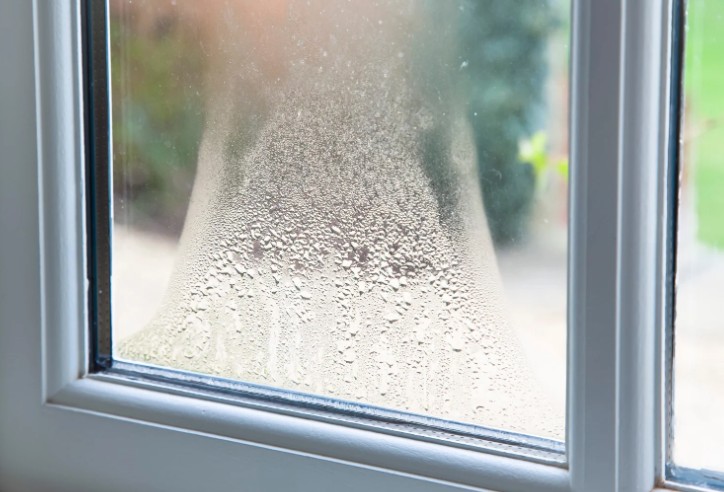- The Day I Discovered My Blown Window
- What Is a Blown Window?
- Can You Really Dry Out a Blown Window?
- Tools and Materials I Use to Dry Out a Blown Window
- Step-by-Step Guide – How To Dry Out a Blown Window?
- Alternative Methods I’ve Tried for Removing Moisture
- How Much Does It Cost to Dry Out a Blown Window in the UK?
- How to Prevent Blown Windows in the Future?
- Final Thoughts
- FAQ – How to Dry Out a Blown Window?
The Day I Discovered My Blown Window
I first noticed it on a chilly November morning. The sun was shining through my living room window, but instead of a clear view, I saw cloudy streaks trapped inside the glass. This wasn’t normal surface condensation — this was inside the double glazing.
If you’ve ever seen this, you probably have a blown window. Then there comes the question how to dry out a blown window.
It means the airtight seal around your double-glazed unit has failed, letting moisture in. In the UK, where damp conditions are common, blown windows aren’t rare.
Instead of rushing to replace the whole unit, I wanted to see if I could dry out the blown window and remove the moisture between the panels. Here’s exactly how to dry out a blown window — and what I learned along the way.
What Is a Blown Window?
Meaning of “blown” in double glazing terms
A “blown window” simply means the sealed unit in your double glazing has failed. The airtight seal around the two panes of glass has broken, allowing air — and with it, moisture — to get in.
Why moisture gets between the glass panels?
Moisture enters through tiny gaps in the perimeter seal. Once inside, it condenses because the space between the panes is cooler than the surrounding air. Over time, the condensation builds up and causes a foggy appearance.
Signs your double glazing seal has failed
- Mist or fog trapped between the glass layers
- Water droplets inside the pane
- Distorted reflections
- Draughts or noticeable temperature changes near the window

Can You Really Dry Out a Blown Window?
When it’s possible to remove condensation without replacing the unit?
If the glass itself is intact and the frame is in good condition, you can sometimes dry out the window by allowing the trapped moisture to escape and then resealing it.
When replacement is the only realistic option?
If the glass is cracked, the frame is rotting, or the seal damage is extensive, drying it out is a temporary fix at best.
Risks of a DIY drying job
- Drilling incorrectly can crack the glass.
- Moisture may return if resealing isn’t perfect.
- May void any remaining warranty on the unit.
Tools and Materials I Use to Dry Out a Blown Window
Complete tools checklist
- Electric drill with a fine glass drill bit (3mm–4mm)
- Safety glasses and gloves
- Low-tack masking tape (to protect the surface)
- Silica gel beads or a moisture absorber
- Small funnel or syringe (for inserting silica gel)
- Clear weatherproof sealant
Optional items
- Dehumidifier for faster drying
- Anti-fog glass treatment for temporary clarity
Step-by-Step Guide – How To Dry Out a Blown Window?
Step 1 – Inspecting the seal and glass
Before touching any tools, I carefully examined the glass edges to find the point where the seal had failed. I also checked the frame to ensure it was solid.
Step 2 – Drilling micro-holes in the spacer bar or frame
I used masking tape on the drill point to prevent slipping. Then, using a fine drill bit, I made a small ventilation hole in the spacer bar or corner of the frame — never in the middle of the glass pane.
Step 3 – Removing moisture from between the glass panels
With the hole in place, I positioned a dehumidifier right next to the window for 24–48 hours. This gradually drew moisture out through the hole.
Step 4 – Using silica gel or moisture-absorbing materials
I inserted silica gel beads into the spacer cavity using a small funnel. These beads absorb any remaining moisture and help keep the space dry.
Step 5 – Resealing the glass to prevent further condensation
Once completely dry, I sealed the hole with clear weatherproof sealant to restore the airtight barrier.

Alternative Methods I’ve Tried for Removing Moisture
Dehumidifier against the glass
Placing a dehumidifier directly in front of the blown window can reduce moisture over several days, but it’s slower without ventilation holes.
Warm air drying
A hairdryer on low heat can temporarily clear condensation for a day or two, but it doesn’t remove the moisture permanently.
Specialist window repair kits
In the UK, some kits come with micro-drill bits, silica gel, and vent plugs designed for DIY defogging.
How Much Does It Cost to Dry Out a Blown Window in the UK?
| Method | DIY Cost (Approx) | Professional Cost (UK) | Lifespan of Fix |
| Drill & dry with silica gel | £15–£30 | £60–£100 | 6–18 months |
| Professional vent plug system | £20–£50 | £80–£150 | 1–3 years |
| Full glass unit replacement | £50–£120 per unit | £120–£250 | 10–20 years |
How to Prevent Blown Windows in the Future?
Maintenance tips to keep seals intact
- Avoid pressure washing windows directly at the seals.
- Keep drain holes in the frame clear so water doesn’t pool.
- Inspect seals annually for early signs of wear.
Reducing humidity inside your home
- Use extractor fans when cooking or showering.
- Ventilate regularly, especially in winter.
- Keep indoor humidity around 40–50%.
Choosing quality double glazing
Invest in windows with warm-edge spacer bars and high-quality seals for longer lifespan.
Final Thoughts
Knowing how to dry out a blown windowing and doing it can give you back a clear view without the cost of full replacement, but it’s usually a temporary fix. In my case, it bought me another year before I replaced the unit.
If you’re confident with tools, the drill-and-dry method with silica gel works well. Just remember — sealing the unit properly is the difference between a fix that lasts months and one that lasts years.
FAQ – How to Dry Out a Blown Window?
1. How long does it take to dry out a blown window?
With the drill-and-dry method, expect 1–3 days depending on moisture levels.
2. Will the moisture come back?
If you don’t fix the seal properly, yes. Even a perfect DIY job may only last 1–2 years before misting returns.
3. Is drilling the glass safe?
Yes, if you use the correct drill bit, go slowly, and drill only in the spacer bar or frame area.
4. Can I use a hairdryer or heat gun?
Only as a short-term fix — it won’t solve the root problem.



0 Comments